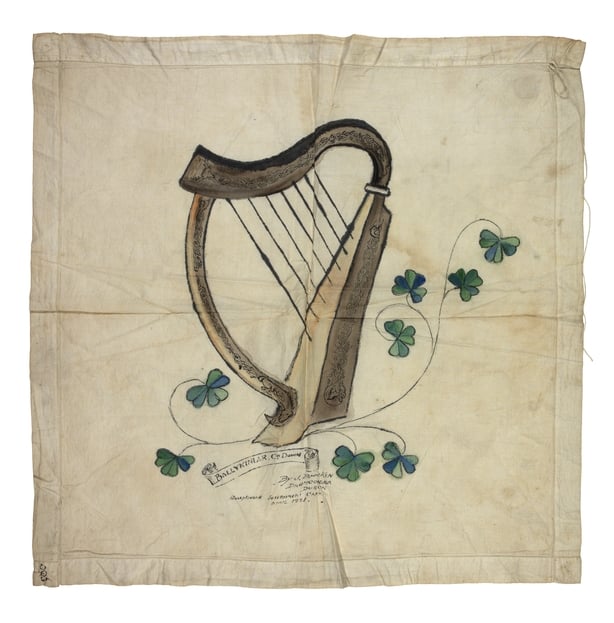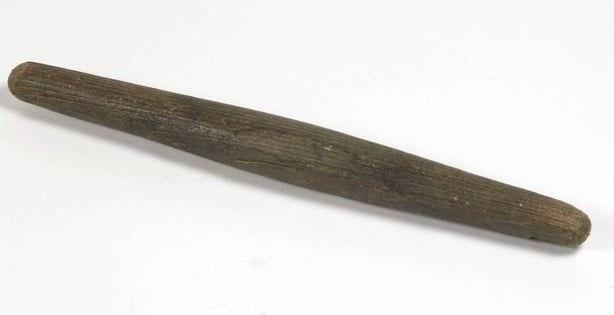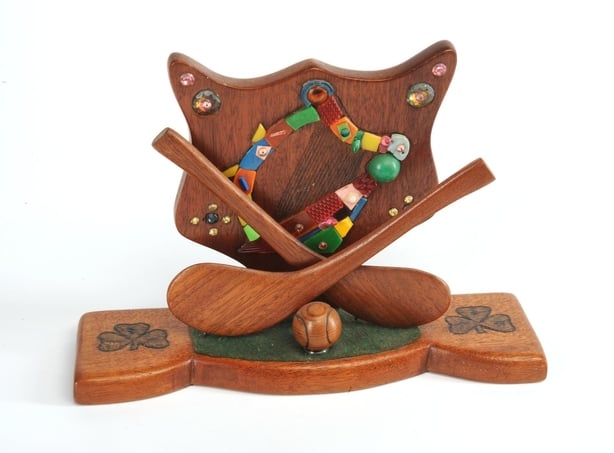Analysis: there has been consistent engagement in Gaelic Games in prisons going right back to the period after the 1916 Rising
Sport plays an important role in prisons and can promote the health and well-being of prisoners, contribute to a safer living environment, and help prisoners to lead law-abiding and useful lives after release. But what impact have Gaelic games had in prison in Ireland?
Historically, prisons have featured a variety of recreational GAA offerings such as Gaelic football tournaments organised by inmates and even intercounty matches being played between them. More recently, institutions have professional physical educators on staff and prisoners also have the opportunity to obtain recognised GAA coaching awards. While the organisation of particular GAA activities has varied depending on prisons' security levels and availability of facilities, there has nonetheless been consistent engagement in Gaelic Games in prisons.
We need your consent to load this rte-player contentWe use rte-player to manage extra content that can set cookies on your device and collect data about your activity. Please review their details and accept them to load the content.Manage Preferences
From RTÉ Radio 1's Doc On One, The All-Ireland Behind Barbed Wire looks at the Kerry vs Louth match in Frongoch in 1916
The revolutionary years of 1916-1923 saw an increase in people being imprisoned in internment camps at the Curragh, Spike Island, Mountjoy and Kilmainham Gaol. These, and other internment camps overseas in Frongoch in Wales and Lincoln Prison in England, led to 'intense Gaelicism’ and gave the opportunity for inmates to exchange ideas and plan strategies for the struggle for independence to come. The GAA tournaments that took place between prisoners were often written about by other inmates and local newspapers published match reports.
The National Museum of Ireland holds a number of items in its collection relating to Gaelic games being played in prison including a junior tournament medal from 1921 and a rugby ball used to play Gaelic football. The collection also has a sideline flag made from a handkerchief which was used during a football match at Ballykinlar internment camp in April 1921. The hand-drawn decorations on it indicate a match between two teams of prisoners, one of which was known as ‘The Shamrocks’ and the other ‘The Harps’. The Ballykinlar camp had its own internal GAA board, who organised various leagues and championship matches, and the space where they played out these competitions was tagged Croke Park.

In the weeks before the 1916 Rising, the Kerry and Louth footballers had qualified for the semi-finals of the GAA’s secondary competition, the Wolfe Tone tournament. As so many players from Kerry and Louth were imprisoned, it was decided that both would contest the unofficial Wolfe Tone final of Frongoch. Attendance was compulsory for all detainees and a crowd of 1,800 watched Kerry win by one point in what became known as the ‘All-Ireland Behind Barbed Wire’.
Given that facilities were limited, prisoners often had to be innovative in sourcing equipment for playing Gaelic games. When committed political activist Sighle Humphreys was imprisoned in Kilmainham Gaol, along with hundreds of women during the Civil War in 1923, she regularly organised games of rounders in the exercise yard. In a clever use of resources, she repurposed the leg of a wooden chair into a bat. Rounders was a particularly popular sport in prison as it required basic equipment and could be played in areas with limited space such as the exercise yard in Kilmainham Gaol.

Hurling was less common in prison out of concern that hurls could be used as weapons. On Spike Island, where almost 1,400 prisoners were held during the War of Independence, prisoners were permitted to play hurling on the parade ground which was surrounded by barbed wire and their hurls were collected after each game. In 1921, prisoner Patrick White was shot by a British solider during a hurling match for retrieving a ball which had gone to the edge of the boundary. He died from his wounds and in 2021, a plaque was later unveiled on Spike Island in his memory.
The impact of the GAA on prison life is also evident through art from the Troubles in Northern Ireland. At Long Kesh Prison near Lisburn in Co. Down, arts and crafts were pursued as part of educational programmes. A wooden shield with hurls and a sliotar was made by a member of the IRA D Company while interned there in the 1980s. The motif of hurls reoccurs in many prison art designs on display in the Eileen Hickey Museum in Belfast.

In recent years, the GAA itself has become more formally involved in promoting Gaelic games in prison. In 2018, Maghaberry Prison in Co. Antrim collaborated with Ulster GAA to coach skills for Gaelic football to prisoners as part of a sports rehabilitation initiative. Twenty prisoners took part in the first GAA Foundation Award course in the prison and at the end, a prisoners team competed in a football tournament against Prison Service teams of staff and prisoners. A similar initiative took place in 2019 when Dublin GAA and Mountjoy Prison teamed up for a four-week GAA skills and development course which featured 10 inmates.
From competitive Gaelic football matches between prisoners during revolutionary years to GAA results being smuggled into prisons in the 1970s, Gaelic Games have been present within the prison landscape for more than a century. The running of development programmes indicates how the GAA now welcomes the opportunity to support prisoners and is embracing its long-held importance as a valuable outlet and distraction to prison life.
The objects featured in this article appear in Siobhán Doyle’s book A History of the GAA in 100 Objects
The views expressed here are those of the author and do not represent or reflect the views of RTÉ








